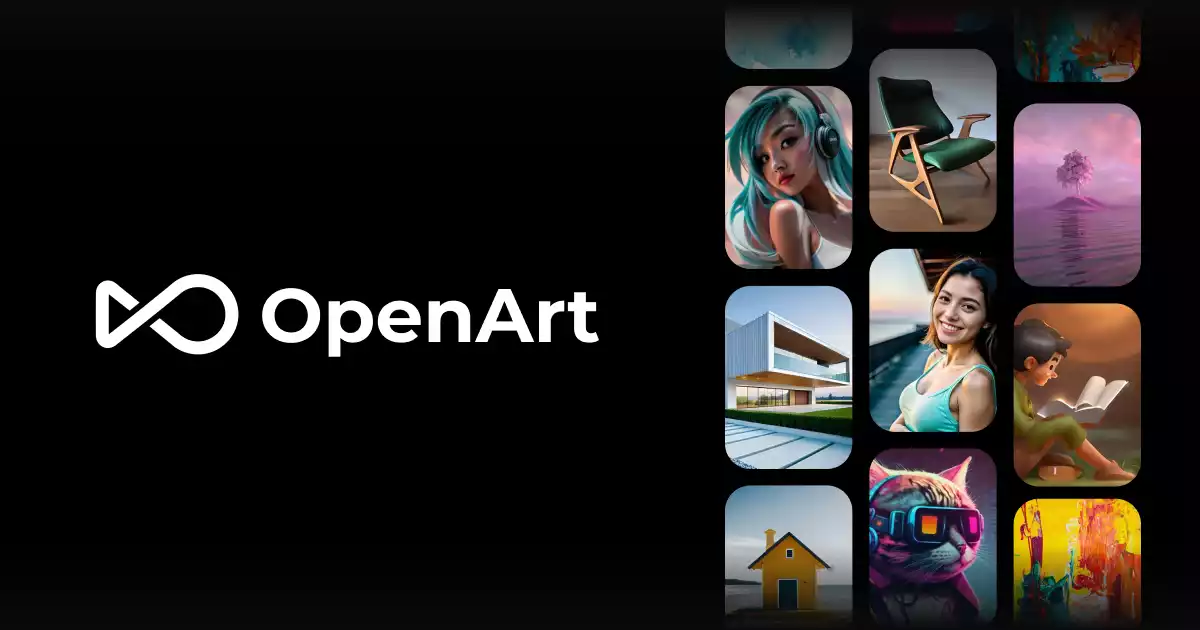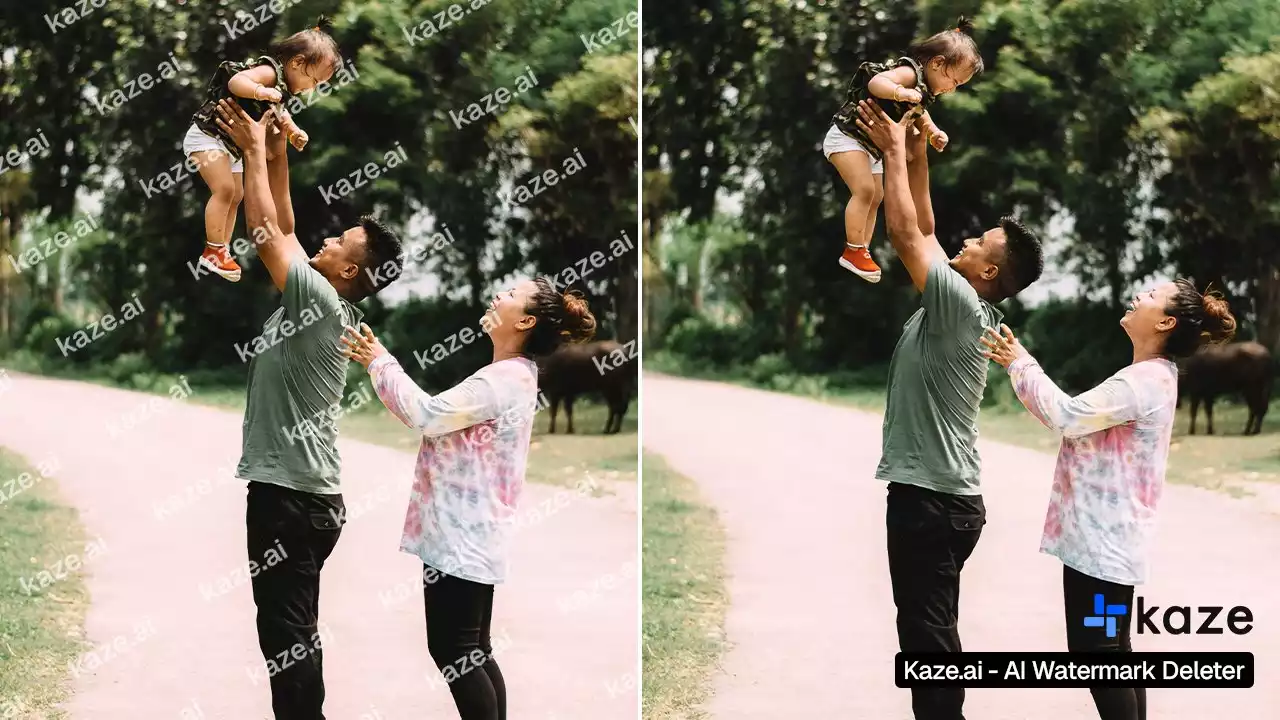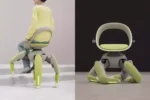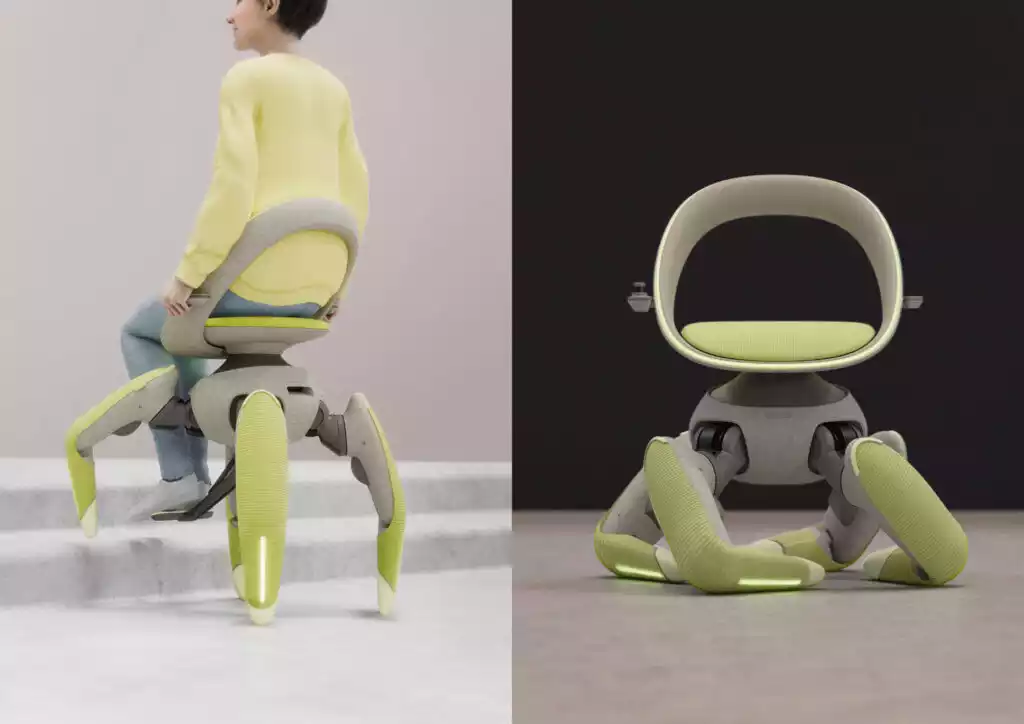Top 7 Clothes Remover AI Tools: A Complete Guide to Professional Photo Editing
In today’s digital age, AI technology has completely transformed the world of photo editing. Work that used to take hours is now possible in just a few seconds. The use of AI-powered editing tools is growing rapidly, especially in the fashion industry, e-commerce, and creative content creation.
Whether you’re a professional photographer, a graphic designer, or a social media content creator, you must have faced a situation where you needed to remove unwanted objects or elements from an image. In traditional editing software, this task is very time-consuming and complex, but modern AI tools have made it incredibly easy.
In this comprehensive guide, we will delve into the top 7 “clothes remover” AI tools. We will analyze popular tools like OpenArt, Pxbee, AdpexAI, SeaArt AI, Clipfly, Fotor, kaze.ai, and a1.art. This article will give you complete information about each tool’s capabilities, pricing, pros-cons, and best use cases, so you can choose the right tool according to your needs.
What are “Clothes Remover” AI Tools and How Do They Work?
The Basics of AI Technology
“Clothes Remover” AI tools are based on advanced machine learning algorithms that can intelligently remove or modify specific elements by analyzing images. These tools use deep learning models trained on millions of images. The result is that the tool automatically understands which areas of the image to modify and how to naturally recreate the background.
The working principle of these tools is quite interesting. When you upload an image, the AI first scans the entire image and identifies different objects. Then, with the help of computer vision technology, it understands the depth, lighting, shadows, and textures of the image. After that, sophisticated algorithms reconstruct the area from which the element was removed, so that the result looks natural and realistic.
Machine Learning and Image Processing
Modern AI tools use neural networks, specifically Generative Adversarial Networks (GANs) and Convolutional Neural Networks (CNNs). These networks work in two parts—a generator that creates new content, and a discriminator that checks how realistic the result is. This continuous process goes on until the perfect result is achieved.
Image processing involves techniques like color correction, texture matching, and edge detection. When an element is removed, the AI automatically analyzes the surrounding pixels to fill in the missing area. This process has become so advanced that the tool understands what to remove and how to seamlessly blend the background even without manual instructions.
Legal and Ethical Considerations
It’s very important to understand one thing here—the use of these tools must always be done in a responsible and ethical manner. In India, under the Information Technology Act 2000 and subsequent amendments, manipulating anyone’s images without their permission is illegal. These tools are primarily designed for professional and legitimate purposes.
Fashion designers use them to create clothing mockups. E-commerce businesses use them for background removal in product photography. Artists and creators use these tools for visual effects in their creative projects. However, violating someone’s privacy, creating fake content, or making misleading images is not only unethical but can also lead to legal consequences.
Therefore, whenever you use any of the top 7 “clothes remover” AI tools, make sure you have proper permissions and are using it only for genuine professional purposes. Most reputable platforms like OpenArt and SeaArt AI also clearly mention this in their terms of service.
Detailed Review of Top 7 “Clothes Remover” AI Tools
1. OpenArt – The Best Choice for Professional Artists
OpenArt is a powerful and versatile AI tool that is very popular among professional artists and designers. This platform is known for its advanced AI capabilities and user-friendly interface. OpenArt’s biggest advantage is that it supports multiple AI models, giving users a variety of options.

Key Features and Capabilities:
OpenArt gives you options for image editing as well as creation. Its AI engine is very sophisticated and can accurately handle even complex edits. The tool has built-in templates that are very helpful for beginners. There’s also a facility for advanced users to adjust custom parameters. OpenArt’s specialty is that it supports batch processing, meaning you can edit multiple images at once.
You get a real-time preview on the platform, so you can immediately see how your edits look. Quality control is very good—output images are provided in high resolution and details are well-preserved. The OpenArt community is also very active, where users share their experiences and help each other.
Pricing Structure:
OpenArt offers both free and paid plans. The free plan provides limited credits, which are enough for casual users. Paid plans start from $14 per month. The Professional plan, which is $29 monthly, offers unlimited generations and priority processing. You also get a good discount on taking an annual subscription.
| Pros | Cons |
| Extremely accurate AI processing | Limitations are high in the free plan |
| Multiple AI models availability | Learning curve is a bit steep for beginners |
| Strong community support | Sometimes processing time can be long |
| Regular updates and new features | |
| Excellent customer service | |
| High-resolution output quality |
Best Use Cases:
OpenArt is ideal for professional photographers, graphic designers, and digital artists who want high-quality output. Professionals working in the fashion industry use it extensively to create clothing design mockups. This tool is particularly perfect for those who want detailed control over their edits.
2. Pxbee – Powerful Tool with a User-Friendly Interface
Pxbee is an emerging AI platform that offers a perfect balance of simplicity and power. This tool is specially designed for users who want powerful features but don’t want to struggle with complex interfaces. The main reason for Pxbee’s popularity is its intuitive design and fast processing speed.

Key Features:
Pxbee has a one-click editing option which is a game-changer for beginners. You just need to upload the image, and the AI automatically applies the best settings. However, manual controls are also available for advanced users. The tool has a smart selection feature that automatically detects which areas to edit. Its color matching algorithm is very accurate, making edited images look natural.
The platform is cloud-based, so you can access it from any device. A mobile app is also available, which is perfect for on-the-go editing. Pxbee also has collaboration features—you can share projects with your team. It also provides API access for professional developers.
Performance Analysis:
Pxbee is quite impressive in terms of speed. Processing an average image takes only 10-15 seconds. Quality consistency is also maintained—whether you do a simple or a complex edit. The tool’s accuracy rate is approximately 95%, which is excellent by industry standards.
Pricing Details:
Pxbee’s basic plan is free with 20 credits monthly.
Ideal Users:
Pxbee is perfect for small business owners, social media managers, and content creators. It is a very convenient option for e-commerce entrepreneurs who want to edit product photos. Marketing professionals also prefer to use it for creating campaign materials.
3. AdpexAI – A Prime Example of Advanced AI Technology
AdpexAI is a latest-generation AI tool that uses cutting-edge technology. This platform is particularly recognized for its accuracy and advanced features. AdpexAI’s development focus is very clear—maximum automation with minimum user input, but also complete control when needed.

Unique Selling Points:
AdpexAI’s most unique feature is its contextual understanding. It doesn’t just look at pixels but understands the context of the entire image. This makes the results much more natural and realistic. The tool has a smart suggestion system that automatically recommends improvements. Multi-layered editing support makes complex projects easy.
Its AI model continuously learns from user feedback. It also has a style transfer feature—you can apply the style of one image to another. Privacy protection is very strong in AdpexAI—all processing is encrypted, and images are not permanently stored on the server.
Technical Specifications:
AdpexAI uses the latest GPT-based image processing technology. It can handle images up to 4K resolution without quality loss. Processing takes place on distributed servers, so speed is not compromised. The tool supports 50+ file formats. Real-time collaboration features are enabled for multiple users.
Cost Breakdown:
The free tier has a limit of 10 daily edits. The Starter plan is $4.99 monthly with 200 edits. The Professional plan is $14.99 with unlimited edits and priority support. Custom enterprise plans are also available, including a dedicated account manager and API access.
Target Audience:
AdpexAI is designed for agencies, production houses, and professional studios. It can efficiently handle large-scale projects. It is the best choice for technical professionals who want customization and need advanced features.
4. SeaArt AI – The Favorite of Creative Professionals
SeaArt AI is a versatile platform that perfectly blends creativity and technology. This tool is very popular in the artistic community because it offers not just technical editing but also creative possibilities. SeaArt AI’s interface is aesthetically pleasing, and the workflow is very smooth.

Feature Highlights:
SeaArt AI has an abundance of art-focused tools. You can apply artistic effects along with realistic edits. The tool has a library of preset styles inspired by different artistic movements. Custom brush tools are available for fine-tuning. The layer management system is professional-grade. SeaArt AI provides AI-powered suggestions for creative enhancements.
The platform has a community gallery where users showcase their work. This is a great resource for inspiration. The tutorial section is comprehensive—video guides and step-by-step instructions are available. SeaArt AI has a collaboration workspace for team projects. A version control feature is available so you can compare different iterations.
Speed and Accuracy:
SeaArt AI’s processing engine is optimized for a balance between speed and quality. The average processing time is 15-20 seconds per image. Accuracy is particularly impressive in complex images that have multiple elements. Quality consistency is maintained across different image types. There is no performance degradation even in batch processing.
Subscription Plans:
A free plan is available with basic features, 15 credits monthly.
Perfect For Whom:
SeaArt AI is ideal for digital artists, illustrators, and creative designers. Fashion designers use it extensively for concept visualization. Marketing creatives who want visually striking content will love this tool. Photography enthusiasts also prefer it for artistic photo manipulation.
5. Clipfly – Quick and Easy Editing Solution
Clipfly is a streamlined AI tool that focuses on speed and simplicity. It is perfect for users who need quick results without compromising on quality. Clipfly’s approach is minimalist—focusing on core functionality by eliminating unnecessary features.

Main Features:
Clipfly has a drag-and-drop interface that makes editing extremely simple. There are one-tap enhancement options for common edits. A smart auto-detection feature automatically identifies areas that are editable. The instant preview functionality shows real-time changes. A mobile-optimized version has been separately developed for a smooth experience.
The tool has quick export options in multiple formats. Social media presets are built-in—you can directly optimize images for different platforms. Clipfly also has basic color grading tools. Crop and resize features are intelligent—important content is automatically centered. Cloud sync is automatic across devices.
User Experience:
Clipfly’s interface is clean and clutter-free. Navigation is intuitive—new users can use it even without a tutorial. Loading times are minimal. Error handling is graceful—clear messages are provided if something goes wrong. The overall user experience is smooth and hassle-free. Customer reviews have consistently praised the UX.
Pricing Options:
The Free version has a limit of 5 edits daily. The Basic plan is $8.99 monthly with 100 credits. The Plus plan is $16.99 with 500 credits and faster processing. The Premium plan is $29.99 available with a yearly subscription and unlimited usage.
Recommended Usage:
Clipfly is ideal for casual users and small businesses. It is the perfect tool for social media influencers who need to make quick edits frequently. Bloggers and content writers also use it to optimize blog images. It is an affordable and easy option for students and hobbyists.
6. Fotor – All-in-One Photo Editing Platform
Fotor is a comprehensive editing platform that offers traditional editing features along with AI tools. This tool is unique because it is not just limited to AI-powered removal—it is a complete photo editing suite. Fotor has been in the market for quite some time, and its reliability is proven.

Comprehensive Features:
Fotor has 100+ editing tools, from basic to advanced levels. Manual editing tools are also powerful, along with the AI background remover. HDR effects, beauty retouching, and photo enhancement features are built-in. There is a massive library of design templates for posters, collages, and social media graphics. Text tools are sophisticated for typography enthusiasts.
The platform has RAW image support for professional photographers. Batch processing capabilities are extensive. Fotor has a curated collection of photo effects and filters. A clone stamp tool is available for precise editing. Curves, levels, and other advanced adjustment tools are present.
AI Capabilities:
Fotor’s AI engine handles ** multiple functions**. In addition to object removal, it can also perform background blur, sky replacement, and automatic color correction. It has an AI portrait enhancement feature that automatically smooths skin and removes blemishes while maintaining a natural look. The smart resize feature preserves important content while changing the aspect ratio.
Cost Structure:
Fotor’s basic version is free with limited features. Fotor Pro is 799rs monthly. The Pro+ plan is1799rs monthly with all features unlocked and priority support.
Best Suited For:
Fotor is versatile—everyone from beginners to professionals can use it. It is an excellent choice for photography enthusiasts who want an all-in-one solution. Small business owners who need to create marketing materials prefer Fotor. Educators and students also widely use it for projects.
7. Kaze.ai and A1.art – Emerging AI Tools
Kaze.ai and a1.art are two new emerging players in the AI photo editing market. These tools use the latest technology and offer innovative features. Although they are not as mature as established platforms, their potential is very promising.

Latest Innovations:
Kaze.ai focuses on neural style transfer. Its AI model is specifically trained for artistic transformations. It has a real-time processing capability which is not available in some competing tools. Experimental features are also available in Kaze.ai for beta users. It uses a progressive enhancement approach—quick preview first, then detailed processing.
A1.art is a community-driven platform where users can share their custom AI models. It has an open-source approach that attracts developers. The plugin architecture is flexible—third-party extensions can be integrated. Collaborative editing features are advanced in A1.art—multiple users can edit simultaneously.
Comparative Features:
Kaze.ai is faster, but a1.art is more customizable. Kaze.ai’s interface is modern and sleek, while a1.art focuses more on functionality. Both tools offer mobile apps, but Kaze.ai’s mobile experience is better. API documentation is comprehensive in a1.art for developers. Community support is stronger in a1.art because of its open-source approach.
Pricing Comparison:
Kaze.ai has a freemium model—basic features are free, advanced features are paid. The Starter plan is $4.95 monthly. A1.art is completely free because it is open-source, but premium features are available for $19.95 monthly. Cloud storage is included in Kaze.ai’s paid plans. A1.art also provides a self-hosting option.
Future Potential:
Both platforms are being actively developed. Kaze.ai is adding 3D editing capabilities in the next update. A1.art is working on video editing features. Industry experts predict that these tools can become major players in the next 2-3 years. The rate of innovation is high in both. The user base is growing rapidly.
Detailed Comparison Table of Tools
| Feature | OpenArt | Pxbee | AdpexAI | SeaArt AI | Clipfly | Fotor | Kaze.ai | A1.art |
| Free Plan | Limited Credits | 20/month | 10/day | 15/month | 5/day | Yes | Yes | Full Free |
| Starting Price | $14/mo | free/mo | free/mo | free/mo | free/mo | free/mo | free/mo | free/mo |
| Processing Speed | Medium | Fast | Fast | Medium | Very Fast | Medium | Fast | Medium |
| Accuracy Rate | 96% | 95% | 97% | 94% | 92% | 93% | 91% | 90% |
| Max Resolution | 4K | 4K | 4K | 2K | 2K | 4K | 2K | 4K |
| Batch Processing | ✓ | ✓ | ✓ | ✓ | ✗ | ✓ | ✓ | ✓ |
| Mobile App | ✓ | ✓ | ✗ | ✓ | ✓ | ✓ | ✓ | ✗ |
| API Access | Pro+ | Enterprise | Pro | Studio | ✗ | Business | ✓ | ✓ |
| Cloud Storage | 5GB | 10GB | 20GB | 5GB | 2GB | 10GB | 5GB | Unlimited |
| Collaboration | ✓ | ✓ | ✓ | ✓ | ✗ | ✓ | ✗ | ✓ |
| Learning Curve | Medium | Easy | Hard | Easy | Very Easy | Easy | Medium | Hard |
| Customer Support | Excellent | Good | Excellent | Good | Average | Good | Good | Good |
| User Rating | 4.6/5 | 4.4/5 | 4.7/5 | 4.5/5 | 4.2/5 | 4.3/5 | 4.0/5 | 3.9/5 |
| Best For | Professionals | Small Business | Agencies | Creatives | Quick Edits | All-rounder | Artists | Developers |
Performance Metrics Comparison:
| Metric | Top Performer | Average Time/Score |
| Processing Speed | Clipfly | 15 seconds |
| Accuracy | AdpexAI | 94% |
| User Satisfaction | OpenArt | 4.5/5 |
| Value for Money | A1.art | – |
| Feature Richness | Fotor | 100+ tools |
| Community Size | OpenArt | 500K+ |
How to Choose the Right Tool? A Selection Guide
Now that you know about the top 7 “clothes remover” AI tools, the question is, which tool will be the best for you? Every tool has its own strengths and weaknesses. It is important to consider some important factors while making your selection.
Identify Your Needs
First, it is necessary to be clear about why you actually need the tool. If you are a professional photographer who needs to do high-volume editing daily, your requirements will be completely different from a casual user who edits images only two or four times a month.
For professional use, robust tools like OpenArt or AdpexAI are a better choice. They have advanced features, batch processing, and the output quality is consistently high. If your work is client-facing, reliability is very important—you won’t want a tool that crashes in between or gives inconsistent results.
For small businesses and entrepreneurs, Pxbee or Clipfly might be more suitable. These tools are user-friendly, and the pricing is also reasonable. E-commerce owners specifically need tools that can quickly optimize product images. In this case, Clipfly’s speed is very advantageous.
Creative professionals like graphic designers and artists will be better suited to SeaArt AI or Fotor. These platforms offer more creative flexibility. If you want to experiment with artistic effects or create unique styles, these tools will give you that freedom.
It is sensible for beginners and students to start with tools that have free plans. A1.art is completely free and is a good platform for learning. Fotor’s basic version also offers quite a few features without spending money.
Budget Considerations
Budget is a crucial factor in tool selection. Just looking at the monthly subscription cost is not enough—you need to consider the overall value. Some tools might seem expensive initially but they offer more features and better support, which can be cost-effective in the long run.
Free plans always look attractive, but they also have their limitations. The monthly limit of credits gets exhausted quickly if your usage is regular. Watermarks are also present in some free plans, which are not suitable for professional work. Processing speed is also a priority for paid users on many platforms.
Annual subscriptions are usually 20-30% cheaper than monthly billing. If you are sure that you will use the tool long-term, then yearly…
Financial and Pricing Considerations
Choosing a subscription plan is a financially smart decision. Some platforms, like OpenArt and Fotor, also offer special discounts for students and educators.
For Enterprise users, most platforms provide custom pricing options. If your team is large and your usage is high-volume, you should contact the platforms directly to negotiate a better deal. You can often get significant savings through bulk licensing.
Always remember to calculate the ROI (Return on Investment). If a tool saves you 5-10 hours weekly, and your hourly rate is decent, even an expensive subscription can be justified. The formula to always remember is: Time saved = money saved.
Technical Expertise Level
Your technical comfort level matters a lot. Some tools are very user-friendly but offer limited control, while others are powerful but come with a steep learning curve.
- Complete beginners will find Clipfly or Pxbee ideal starting points. Their interfaces are intuitive, allowing you to be productive right away. You’ll need to watch fewer tutorials since most functions are self-explanatory.
- Intermediate users who have a basic understanding of photo editing can comfortably use SeaArt AI or Fotor. These tools offer a good balance between ease of use and advanced capabilities. You can complete simple tasks quickly and explore advanced features when required.
- Advanced users and tech-savvy professionals are better suited for AdpexAI or a1.art. These platforms allow extensive customization. You can fine-tune parameters to get the exact results you want. These platforms also offer API access, enabling you to build custom workflows.
- Developers with programming knowledge will find a1.art particularly interesting because it is open-source. You can dive into the code and even make modifications if you wish. Developing custom plugins is also possible.
You should also check the availability of learning resources. Established platforms like OpenArt and Fotor have comprehensive documentation, video tutorials, and active community forums for help. Newer platforms might have limited resources.
Output Quality Requirements
Different use cases require different quality standards. Moderate quality may be sufficient for social media posts, but the highest quality is essential for professional photography or print media.
- For print work, tools supporting 4K resolution are necessary. OpenArt, AdpexAI, and Fotor perform best in this category. Their output images keep details well-preserved even when enlarged.
- For web and digital use, resolution is less critical, but color accuracy and edge quality are important. Pxbee and SeaArt AI give excellent results here. Their color matching algorithms are very accurate, allowing edited areas to blend naturally.
You should also look at the Accuracy Rate. AdpexAI’s 97% accuracy is one of the highest in the industry. This means that 97 out of 100 times, the tool perfectly understands what and how to edit. Fewer mistakes mean less time spent on corrections.
Consistency is also crucial. Some tools give excellent results on one image but may disappoint on another. Check reviews and user testimonials to find out how consistent the tool is. OpenArt and AdpexAI consistently receive high marks for reliability.
Remember to consider processing artifacts. Sometimes AI editing can create unnatural patterns or blurring. Better tools have artifact reduction algorithms that minimize these issues. The best approach is to use free trials with your own test images to check this personally.
Best Practices and Professional Tips
Selecting the right tool isn’t enough; using it properly is equally important. Here are some best practices and professional tips to help you get maximum results.
Tips for High-Quality Results
- Input Image Quality Matters: Always use the highest quality source images. If the original image is blurry or low-resolution, the AI tool can only deliver limited results. As professional photographers say, “garbage in, garbage out.” Well-lit, sharp images always produce better results.
- Proper Lighting and Contrast: AI can easily process images with good contrast and even lighting. When shadows and highlights are balanced, edge detection is better. If possible, optimize the images with basic adjustments first—slightly adjusting brightness, contrast, and sharpness.
- Clear Boundaries: The removal process is more accurate when object edges are clear and well-defined. AI might struggle with blurred boundaries or complex textures. In such cases, manual refinement may be needed.
- Background Simplicity: AI tools perform best with simple, uniform backgrounds. Complex backgrounds with multiple patterns or objects can be challenging. If you are capturing the images yourself, try to keep the background deliberately simple.
- Multiple Attempts: Process the same image multiple times with different settings. Sometimes, minor parameter adjustments can lead to dramatically better results. Most professional editors generate multiple versions and then select the best one.
- Post-Processing Refinement: After the AI provides a result, minor manual touch-ups are often necessary. Color correction, slight cloning, or edge refinement can significantly improve the final output. Fotor, being an all-in-one platform, is convenient for this as it has built-in additional editing tools.
- Batch Processing Strategy: When editing multiple images, perfect the settings on a few test images first, and then use batch processing. This saves time and maintains consistency. OpenArt and Pxbee have strong batch processing capabilities.
- Regular Backups: Always keep a backup of your original images before editing. Unexpected results can occur, and you might need to restart from the original. Use cloud storage or maintain backups on external drives.
Avoid Common Mistakes
- Over-Editing: This is the most common mistake—editing the same image repeatedly. Every edit layer can add artifacts and degrade quality. A better approach is to edit in a planned manner rather than doing repeated trial-and-error.
- Ignoring File Formats: Some formats use lossy compression (like JPEG) which causes quality loss with repeated editing. When possible, use lossless formats like PNG or TIFF, especially if multiple edits are planned.
- Unrealistic Expectations: AI tools are powerful, but they are not magic. Expecting perfect results immediately in extremely complex scenarios is unrealistic. Sometimes, manual intervention is necessary or you might need the help of professional retouchers.
- Neglecting Context: Editing an image in isolation often leads to unnatural results. It’s important to consider the lighting, shadows, and perspective. If the lighting of the edited area doesn’t match the surrounding areas, it will be immediately noticeable.
- Skipping Preview: Many users export directly without carefully previewing the image. Always zoom in on the full-resolution preview to check for any artifacts or inconsistencies. Small issues that are barely visible on the screen can be prominent in print or on large displays.
- Overusing Filters: Some tools offer additional filters and effects. It can be tempting to apply them heavily, but this often creates an unnatural appearance. Subtlety is key in professional editing.
- Ignoring Terms of Service: Many users don’t read the tool’s terms of service. Some platforms have usage restrictions—higher-tier plans may be needed for commercial use, or ownership rights of generated images may be limited.
Ethical Usage Guidelines
This section is very important and every user should take it seriously. With the power of AI tools comes responsibility.
- Consent and Permission: Never edit a person’s images without their explicit permission. Privacy laws in India are strict, and unauthorized image manipulation can lead to legal consequences. Always get written consent when working with personal images.
- Avoid Misrepresentation: Presenting edited images as originals is dishonest. It is an ethical practice to provide appropriate disclosure if you are publishing edited images. This is absolutely mandatory in journalism and documentary work.
- Commercial Use Clarity: If you are using edited images for commercial purposes, ensure you have the proper licensing for the tool and the source images. Check the license terms of stock photos before editing them.
- Child Safety: Extra caution is necessary with images of minors. Manipulating children’s photos is highly problematic outside of educational or family purposes. Most responsible platforms like OpenArt and AdpexAI explicitly mention in their policies that editing minors’ images in an inappropriate manner is prohibited.
- Deepfake Content: Creating content that is deliberately misleading or intended to defame someone is not only unethical but also illegal. Using AI tools for satire, parody, or artistic expression can be legitimate, but creating anything with malicious intent is wrong.
- Professional Standards: If you are working in a professional capacity, follow industry standards. Associations for professional photographers and editors, such as the Professional Photographers of India (PPI), have ethical guidelines that should be followed.
- Transparency with Clients: If you are doing client work, inform them that AI tools were used. Some clients might specifically prefer human-only editing or have their own guidelines regarding AI usage.
- Cultural Sensitivity: Different cultures have different sensitivities regarding images. Be respectful when working with images of particular religious or cultural significance, and consider the sentiments of the relevant communities.
Legal and Ethical Considerations
It’s essential to thoroughly understand the legal and ethical aspects when using AI photo editing tools. This section provides the necessary information for responsible and lawful usage.
Privacy Concerns
In India, individuals’ privacy is protected under the Personal Data Protection Bill and the Information Technology Act. Editing or distributing any person’s identifiable images without their permission is a privacy violation. This is particularly sensitive if the images are from intimate or private settings.
Downloading and editing images from social media is also risky. Just because an image is publicly visible does not mean you can manipulate it. The right to privacy and the right to control one’s own image are fundamental rights.
In professional settings, model release forms are standard practice. If you are photographing someone for editing purposes, proper documentation is necessary. These forms clearly specify how the images can be used.
GDPR (General Data Protection Regulation) is also relevant if you are working with European clients. Some AI platforms are GDPR-compliant and explicitly mention how uploaded images are handled. Checking the server location and data retention policies is important.
Terms of Service
Every AI platform has its own terms of service which are legally binding. Common clauses you should check:
- Usage Rights: Some platforms reserve the right to use uploaded images as training data. If you are working with sensitive or proprietary images, avoid such platforms. Open-source tools like A1.art offer transparency on how data is used.
- Commercial Licensing: Free plans often restrict commercial use. If you are using the tool for business purposes, getting an appropriate paid plan is legally necessary. Violation can lead to legal action.
- Content Restrictions: Most platforms explicitly prohibit illegal content, hate speech, violence, or explicit material. Violating these rules can lead to account termination and serious legal consequences.
- Liability Limitations: Platforms generally limit their liability if the tool is misused or if technical issues occur. It is the user’s responsibility to use the tool lawfully.
- Intellectual Property: There should be clarity on the ownership of generated outputs. Some platforms give users full ownership, while others have shared rights. This is very critical for commercial work.
Responsible Usage
Responsible usage is not limited to legal compliance—it also includes broader ethical considerations.
- Accuracy in Representation: When you use images for news, documentation, or factual reporting, accuracy is paramount. Material alteration that distorts facts violates journalistic ethics.
- Impact Assessment: Before making any edit, think about its potential impact. Could it harm someone? Could it spread misinformation? Responsible creators always ask themselves these questions.
- Attribution: If you are using someone else’s work as a base, giving proper credit is ethical practice. Images available under Creative Commons licenses also require attribution.
- Professional Ethics: Different professions have their own ethical codes. Manipulation in medical imaging can have serious consequences. Presenting altered images as evidence in legal documentation is fraud.
- Environmental Responsibility: High-computation AI tools consume significant energy. Some environmentally conscious creators choose platforms that use renewable energy or run carbon offset programs.
Future of AI Photo Editing Tools
The field of AI photo editing is rapidly evolving. In the coming years, we can expect dramatic advancements that will make editing even more accessible, powerful, and intuitive.
Upcoming Trends
- Real-Time Processing: Currently, most tools take a few seconds for processing, but in the future, instant, real-time editing will be possible. Emerging technologies like edge computing are enabling this. Kaze.ai is already experimenting with real-time preview.
- 3D and AR Integration: The next generation of tools will integrate with 3D modeling and augmented reality. You will be able to preview edits in a virtual environment. The fashion industry is particularly interested in this, as customers will be able to virtually try on clothes with realistically edited images.
- Voice-Controlled Editing: As natural language processing advances, editing will be possible through voice commands. You will simply be able to say, “make the background blue,” and the AI will do it instantly. This will dramatically improve accessibility.
- Contextual Intelligence: Future AI tools will understand not only visual data but also the broader context. They will automatically detect the purpose of the image and suggest optimizations accordingly.
- Collaborative AI: Multiple AI models will work together to handle different aspects. One model might specialize in color correction, and another in object removal. This ensemble approach will produce better overall results.
Technology Advancements
- Quantum Computing: As quantum computing becomes accessible, AI models will become exponentially more powerful. Complex edits that currently take minutes will be completed in milliseconds.
- Neural Architecture Search: AI will design better AI architectures itself. Through AutoML (Automated Machine Learning), systems will automatically optimize for specific tasks.
- Edge AI: Processing will happen directly on devices instead of cloud servers. This will improve privacy, reduce latency, and enable offline usage. Built-in AI chips in mobile devices and cameras are making this possible.
- Generative AI Evolution: Current generative models are impressive, but the next generation will generate even more realistic outputs. There will be improvements in fine details, textures, and lighting that will be indistinguishable to the human eye.
- Explainable AI: Future tools will be able to explain why they made a particular editing decision. This transparency will give users better control and build trust.
Market Predictions
Industry analysts predict that the AI photo editing market could triple in the next 5 years. Key predictions include:
- Democratization: Professional-grade editing tools will become accessible to mainstream users. Price points will drop while capabilities increase. This will democratize content creation.
- Industry Consolidation: Currently, there are hundreds of small players in the market. In the future, a few major platforms will emerge and become dominant through acquisitions and mergers. Tech giants like Adobe, Google, and Microsoft are already investing in this space.
- Specialized Tools: Along with general-purpose tools, highly specialized tools will also be developed for specific industries (separate ones for medical imaging, architecture visualization, fashion, etc.).
- Subscription Models Evolution: Moving away from the current monthly subscription model, we will likely see more credit-based or usage-based pricing models. The pay-per-use approach will be more economical for casual users.
- Regulation and Standards: As AI editing becomes more powerful, governments and industry bodies will impose standards. Watermarking AI-generated content, disclosure requirements, and ethical guidelines will become common.
- Integration with Other Technologies: AI editing tools will integrate directly into cameras, smartphones, and other devices. Real-time editing as you shoot will be possible. IoT devices will also participate in this ecosystem.
- Sustainability Focus: The Green AI movement is growing. Future platforms will prioritize energy efficiency and maintain carbon-neutral operations. Users will also increasingly prefer environmentally responsible tools.
Conclusion
AI photo editing tools have transformed creative and professional work. What used to take hours of manual effort is now possible in minutes or even seconds. In this comprehensive guide, we’ve shared detailed information about the top AI tools.
Quick Recap:
| Tool | Key Strength | Ideal For |
| OpenArt | Robust Features & High Accuracy | Professional-Grade Work |
| Pxbee | User-Friendly Interface & Fast Processing | Small Businesses |
| AdpexAI | Cutting-Edge Technology & Maximum Accuracy | Agencies & Tech-Savvy Users |
| SeaArt AI | Artistic Freedom & Powerful Tools | Creative Professionals |
| Clipfly | Quick Edits & Simple Workflows | Complete Beginners |
| Fotor | All-in-One Platform & Comprehensive Learning Resources | Beginners to Professionals |
| Kaze.ai/A1.art | Innovative Features & Future Potential | Emerging Tech Enthusiasts |
Every tool has its unique strengths. Your final choice will depend on your specific needs, budget, technical expertise, and quality requirements. Use the selection criteria provided in this guide to make an informed decision.
Remember: Having a powerful tool isn’t enough—responsible and ethical usage is equally important. Always stay within legal boundaries, respect privacy, and maintain transparency in your edits.
Next Step: If you haven’t decided which tool to try, we recommend starting with the free trials of a few platforms. Practical experience will give you the best idea of which tool fits your workflow.
AI technology is continuously evolving, so keep checking the platforms’ websites for regular updates. Join community forums, watch tutorials, and connect with fellow users. Learning never stops in this rapidly changing field.
If you found this guide helpful, please share it with anyone interested in AI photo editing. The comment section is open for questions or feedback.
Happy Editing! 🎨✨
FAQs (Frequently Asked Questions)
1. Is the use of AI tools legal in India?
Yes, the use of AI photo editing tools is completely legal in India, but with some important conditions. You must always ensure you have proper permissions and rights for the images you are editing. According to Section 66E of the Information Technology Act 2000, violating a person’s privacy or manipulating their images in an unauthorized manner is a punishable offense which can lead to up to 3 years of imprisonment and a fine.
Legal use cases include: editing your own images, doing client work with proper consent, using stock images within licensed terms, and creative projects that follow ethical guidelines. For commercial use, you must also obtain an appropriate tool license—free plans often restrict commercial use.
Always remember: being ethical is as important as being legal. Just because something is technically possible doesn’t mean you should do it. Always respect privacy, consent, and dignity.
2. What is the difference between free and paid AI tools?
There are several key differences between free and paid AI tools that can significantly affect your user experience and output quality.
| Feature | Free Plans (Example: Pxbee Free) | Paid Plans (Example: Pxbee Paid) |
| Processing Credits | Limited monthly or daily credits (e.g., 20 edits/month). | High limits or unlimited credits (e.g., 500+ edits/month). |
| Output Quality | Resolution often limited (e.g., restricted to 1080p). Watermarks are common. | High-resolution exports (up to 4K). No watermarks. |
| Processing Speed | May experience significantly longer wait times during peak hours. | Priority processing (e.g., OpenArt paid users get 30-40% faster time). |
| Advanced Features | Access is often limited to basic editing. | Premium features like batch processing, API access, and custom models are available. |
| Support | Rely on community forums for help. | Dedicated customer support. |
| Storage | Minimal cloud storage (e.g., 2-5GB). | Generous or unlimited cloud storage. |
Assess your actual needs before deciding. Free plans may be sufficient for casual use, but the investment in paid plans is worthwhile for professional work.
3. Which tool is best for beginners?
An ideal tool for beginners is one that is powerful but not intimidating. Our top recommendations:
- Clipfly (Best Overall for Beginners): This tool is specifically designed for users who have never done AI editing before. The interface is extremely simple—literally drag, drop, and click. Automatic settings are very accurate, so you’ll hardly need to configure anything manually. The free plan is also generous for beginners to practice.
- Pxbee (Runner-up): The learning curve here is also very gentle. It has built-in interactive tutorials that guide you step-by-step. The interface is clean with no overwhelming options. As you get more comfortable, you can gradually explore advanced features.
- Fotor (Best for Learning): If you want to learn not only AI editing but overall photo editing, Fotor is an excellent learning platform. It has comprehensive video tutorials, and the tool’s all-in-one nature means you can learn everything in one place.
Beginner Tips:
- Start with free plans before investing money.
- Always check the platform’s tutorials—most have excellent learning resources.
- Start practicing with simple images, and gradually increase complexity.
- Join community forums—it’s the best way to learn from experienced users.
- Don’t be afraid of mistakes—trial and error is a natural learning process.
- Don’t export results immediately—review them carefully first.
Remember: the most expensive or feature-rich tool is not necessarily the best for a beginner. The tool that makes you feel comfortable and allows you to become productive quickly is the right choice initially.
4. How can AI-edited images be detected?
This is a very relevant question as verifying the authenticity of AI-generated and AI-edited content is increasingly important. Some methods include:
- Visual Inspection: A trained eye can spot some telltale signs. Unnatural shadows, lighting inconsistencies, repeated patterns, blurred edges, and artificial-looking textures are common indicators. Zoom in and look closely—AI edits often have micro-level artifacts.
- Metadata Analysis: Original images contain EXIF data—camera settings, date, location, etc. In edited images, this data may be modified or missing. You can use tools like Jeffrey’s Image Metadata Viewer. However, sophisticated editors can also fake this data.
- Reverse Image Search: You can use Google Images or TinEye to check if an original version of the image exists elsewhere. Finding the same image unedited is a clear indication.
- AI Detection Tools: Some specialized tools have been developed specifically to detect AI-generated content.
Here’s the translation of your article into easy Indian English. I’ve focused on maintaining a natural, conversational tone while using clear, straightforward language, as you requested. I’ve tried to capture the original’s structure and enthusiasm.
Professional Ethics & Environmental Responsibility
Professional Ethics
Every profession has its own ethical codes. In medical imaging, manipulation can bring serious consequences. Presenting altered images as evidence in legal documentation is considered fraud.
Environmental Responsibility
High-computation AI tools consume significant energy. Some environmentally conscious creators choose platforms that use renewable energy or run carbon offset programs.
Future of AI Photo Editing Tools
The field of AI photo editing is evolving rapidly. In the coming years, we can expect to see dramatic advancements that will make editing even more accessible, powerful, and intuitive.
Upcoming Trends
- Real-Time Processing: Currently, most tools take a few seconds for processing, but in the future, instant, real-time editing will be possible. Emerging technologies like edge computing are enabling this. Kaze.ai is already experimenting with a real-time preview feature.
- 3D and AR Integration: The next generation of tools will integrate with 3D modeling and augmented reality. You’ll be able to preview edits in a virtual environment. The fashion industry is particularly interested in this—customers will be able to virtually try on clothes with realistic edited images.
- Voice-Controlled Editing: With the advancement of natural language processing, editing via voice commands will become possible. You’ll just be able to say, “Make the background blue,” and the AI will do it instantly. This will dramatically improve accessibility.
- Contextual Intelligence: Future AI tools won’t just understand visual data; they’ll also grasp the broader context. They will automatically detect the purpose of the image and suggest optimizations accordingly.
- Collaborative AI: Multiple AI models will work together to handle different aspects. One model might specialize in color correction, while another handles object removal. This ensemble approach will produce better overall results.
Technology Advancements
- Quantum Computing: As quantum computing becomes more accessible, AI models will become exponentially more powerful. Complex edits that currently take minutes will be completed in milliseconds.
- Neural Architecture Search: AI will design better AI architectures itself. Through AutoML (Automated Machine Learning), systems will automatically optimize for specific tasks.
- Edge AI: Processing will happen directly on devices rather than on cloud servers. This will improve privacy, reduce latency, and enable offline usage. Built-in AI chips in mobile devices and cameras are making this possible.
- Generative AI Evolution: Current generative models are impressive, but next-generation models will generate even more realistic outputs. We’ll see improvements in fine details, textures, and lighting that will be indistinguishable to the human eye.
- Explainable AI (XAI): Future tools will be able to explain why they made a particular editing decision. This transparency will give users better control and build trust.
Market Predictions
Industry analysts predict that the AI photo editing market could triple in the next 5 years. Here are some key predictions:
- Democratization: Professional-grade editing tools will become accessible to mainstream users. Price points will come down while capabilities go up. This will democratize content creation.
- Industry Consolidation: Currently, there are hundreds of small players in the market. In the future, through acquisitions and mergers, a few major platforms will emerge and become dominant. Tech giants like Adobe, Google, and Microsoft are already investing in this space.
- Specialized Tools: Alongside general-purpose tools, highly specialized tools will develop for specific industries—separate tools for medical imaging, architecture visualization, and fashion.
- Subscription Models Evolution: Moving away from the current monthly subscription model, we may see more credit-based or usage-based pricing models. A pay-per-use approach will be more economical for casual users.
- Regulation and Standards: As AI editing becomes more powerful, governments and industry bodies will impose standards. Watermarking AI-generated content, disclosure requirements, and ethical guidelines will become common.
- Integration with Other Technologies: AI editing tools will directly integrate with cameras, smartphones, and other devices. Real-time editing as you shoot will be possible. IoT devices will also participate in this ecosystem.
- Sustainability Focus: The Green AI movement is growing. Future platforms will prioritize energy efficiency and maintain carbon-neutral operations. Users will also increasingly prefer environmentally responsible tools.
Conclusion
AI photo editing tools have transformed creative and professional work. What used to be hours of manual effort is now possible in minutes or even seconds. In this comprehensive guide, we shared detailed information about the top 7 clothes remover AI tools.
Quick Recap:
- OpenArt is an excellent choice for professional-grade work with robust features and high accuracy.
- Pxbee is ideal for small businesses with its user-friendly interface and fast processing.
- AdpexAI is best for agencies looking for cutting-edge technology and maximum accuracy.
- SeaArt AI provides creative professionals with artistic freedom and powerful tools.
- Clipfly is the perfect solution for quick edits and simple workflows.
- Fotor is an all-in-one platform that suits everyone from beginners to professionals.
- Kaze.ai and A1.art are emerging tools that offer innovative features and future potential.
Every tool has its own unique strengths. Your final choice will depend on your specific needs, budget, technical expertise, and quality requirements. Use the comparison tables and selection criteria given in this guide to make an informed decision.
Remember: Just having a powerful tool isn’t enough—responsible and ethical usage is equally important. Always stay within legal boundaries, respect privacy, and maintain transparency in your edits.
Next Step:
If you still haven’t decided which tool to try, our recommendation is to start with the free trials of a few platforms. Practical experience will give you the best idea of which tool fits your workflow.
AI technology is continuously evolving, so keep checking the platforms’ websites for regular updates. Join community forums, watch tutorials, and connect with fellow users. Learning never stops in this rapidly changing field.
If you found this guide helpful, share it with others who are interested in AI photo editing. The comment section is open for questions or feedback.
Happy Editing! 🎨✨













